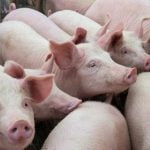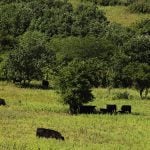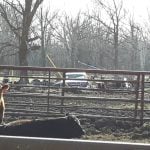
Tag Archives Cows

Beef cattle more prone to trace mineral deficiencies
Animal Health: A recent study showed connections between some trace mineral deficiencies and disease

Good mineral-vitamin programs for beef cows drive successful reproduction
Better Bunks and Pastures: A breeder mineral is critical for beef cows during the breeding season

Early-gestating beef cows need good nutrition
Better Bunks and Pastures: Two-stage use of minerals over the fall and winter can help cows maintain body condition at a better cost

To butcher or not to butcher that cow?
Animal Health: Have a proper diagnosis of a sick or downed animal before administering any treatments

Weather didn’t co-operate for calving beef cows
Rancher's Diary: After a short labour, a new great-granddaughter is welcomed into the family

Bovine respiratory disease events may have a long-lasting effect
Early cases of bacterial infection could affect performance of replacement heifers

Continuous tie-stall housing to be phased out in new dairy code of practice
Producer, animal welfare groups praise new code; some drawbacks were noted

A great video that shows calving techniques
Animal Health: It helps to correct a malpresentation when you know what it looks like

More than one way to get replacement cows
The general rule of an annual 10 per cent turnover in the cow herd may be an underestimate

Tips on when and how to check a cow when calving
It’s a combination of art and science to know when to assist in a birth without being too forceful


